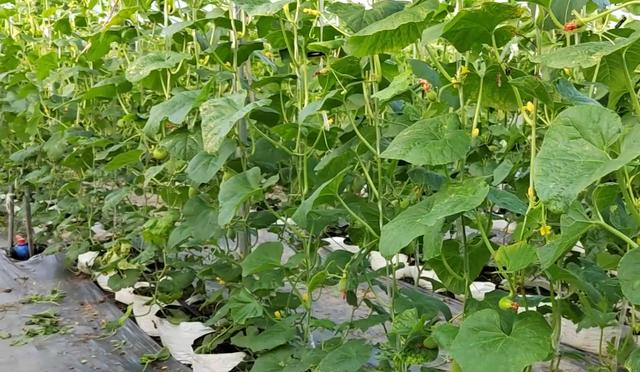The melon vine blight is too difficult to treat. When will the medicine be good? Farmers should pay attention during 2 periods in gardening
The melons planted in the early spring stubble of greenhouses, which are cultivated in a soilless manner, have now matured in large quantities. Melon quality and high yield are inextricably linked to field management, with tender green leaves and strong stem roots, so that the melon can be delicious. Many farmers say that the melons grown in their greenhouses have many dead seedlings, mainly caused by cranbernia, and they have not been able to find a complete control agent.

Cranber blight is one of the most common diseases of melons, and both stems and leaves can be infected. For example, after the onset of the disease, the leaves show V-shaped or round spots, which look dry and large, and are easier to find. When the stem is sick, the spots circle the stem, and the plant cannot absorb nutrients and wilts. Our experience in the prevention and control of cranbernia is prevention-oriented, to prevent large-scale occurrence, and the effect of late spraying and prevention is poor, you can look at our method:
- After the melon is slowed down, it is necessary to start preventing cranberry blight. By this time, the roots have been able to deliver nutrients to the upper plants, and the stems and leaves have begun to grow. However, when four or five leaves are grown, the stems have not yet lignified, and when agricultural operations, it is easy to break the stems and leave wounds. Germs will take advantage of the opportunity to infect from the wound to a large area in the later stage. Therefore, after the melon seedlings are slowed down, the management is strengthened.
On the one hand, after the melon seedlings are slowed down, the spray agent is applied to prevent the occurrence of vine blight, and generally every 10 days or so, the drug is sprayed again, focusing on prevention. The prevention and control of melon vine blight is commonly used azoxystrobin, phenoxymethazole, flupiramide, etc., or the use of compound fungicides, the effect is better, pay attention to the dosage when using in the early stage.
On the other hand, from the water and fertilizer management, it promotes the growth of seedlings and reduces the wounds on the stems. When fertilizing, various elements are balanced, and the use of calcium and boron is paid attention to in the early stage, and many farmers only begin to use calcium fertilizer in the late stage of growth to prevent cracking melons, and supplement calcium fertilizer after slow seedlings to promote lignification of stems and prevent injury to rhizomes. After slow seedlings, when watering, it is necessary to water evenly, the substrate or soil moisture is 60 to 80%, and it is easy to cause stem cracking when it is dry and wet.

- Although the early stage has been preventing vine blight, but it is more difficult than imagined, melon nutrient growth is vigorous, a large area of disease spots appear at the edge of the leaves. The symptoms are mild, only a few plants have diseases, and they have not yet reached the level of pulling seedlings, which is also the effect of early prevention.
After the appearance of cranberration blight, the leaf with the disease spots is removed first, and then the fungicide is sprayed again. If the whole plant has withered, it is necessary to pull out the seedlings in time, and when planting the bag, the diseased bag should be removed. At the same time, control the humidity in the shed to prevent the occurrence of diseases in large areas.
Melon vine blight has a greater impact on yield, and should be prevented in advance and prevented and controlled in time when diseases are found. The above 2 points are our experience in preventing and controlling vine blight in the process of planting melons, and farmers and friends can refer to them when planting.


